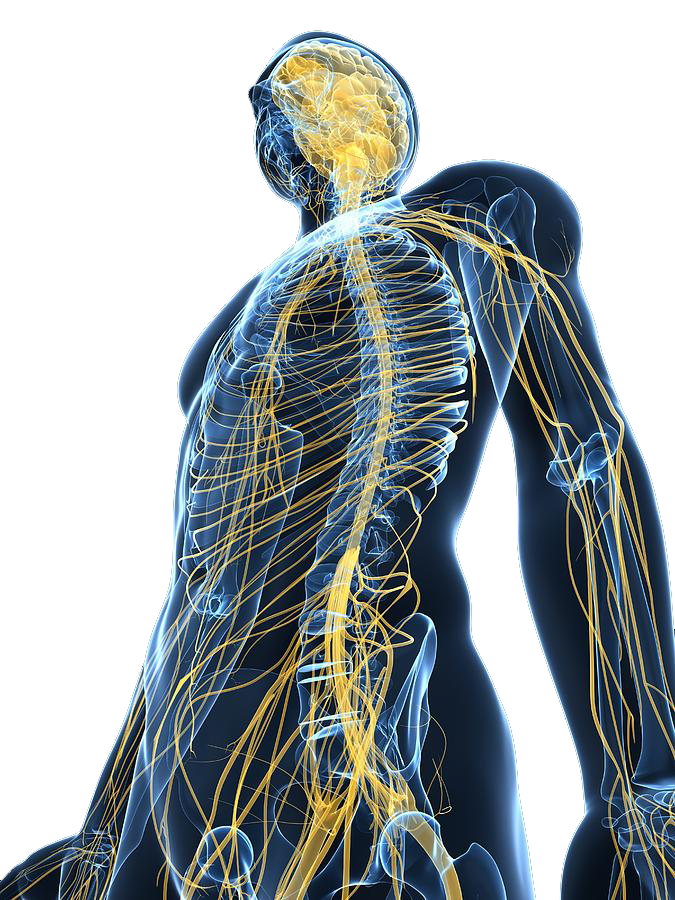
Multiple Sclerosis
Stem Cell Therapy for Multiple Sclerosis
Stem Cell Therapy for Multiple Sclerosis
About Multiple Sclerosis
-
Multiple Sclerosis (MS) is a chronic condition that affects the central nervous system, including the brain, spinal cord, and optic nerves. In this disease, the immune system mistakenly attacks the myelin sheath, which is the protective layer surrounding nerve fibers that enables efficient signal transmission. Multiple Sclerosis causes temporary lesions and inflammation of the nerve cells. It can also lead to permanent damage and scar tissue (sclerosis), making it difficult for the brain to transmit signals to the rest of the body.
According to the National Institute of Neurological Disorders and Stroke (NINDS), more than 350,000 people in the United States suffer from MS. However, the National Multiple Sclerosis Society estimates that this number may exceed one million patients in the US.
Based on the disease's progression, there are four distinct types of Multiple Sclerosis:
PPMS (Primary Progressive Multiple Sclerosis)
RRMS (Relapse-Remitting MS)
SPMS (Secondary Progressive MS)
CIS (Clinically Isolated Syndrome)
-
The main reason for Multiple Sclerosis is the autoimmune attacks the body. These destructions can cross the blood-brain barrier and cause damage to the protective layer of the myelin sheath of the nerve fibres.
Demyelination causes remission of the nerve fibres (formation of new myelin), but the inflammation of the nerve tissue leads to the formation of scar tissues. These scar tissues can result in neurological impairment of the involved nerve and the area.
In general, there is no single standard factor or cause of Multiple Sclerosis. Several factors and a combination of triggering stimuli give rise to abnormalities in the immune system to act against its function.
-
The most common risk factors of MS are:
Age and gender: People in their young age group are more prone to developing this disease. Most Multiple Sclerosis diagnosed patients are in their 20-40 years of age. However, in terms of gender, females are more affected by this disease than males.
Infections: Exposure to deadly viruses such as EBV (Epstein-Barr) or Mononucleosis can increase a person's risk of developing MS. Other viruses such as Mycoplasma Pneumonia, and HHV6 (Human Herpesvirus Type-6) can also play a vital role in triggering the immune system.
Nutrient deficiency: Essential vitamins such as Vitamin D and B-12 are vital for the body's normal functioning. The deficiency of these nutrients can cause abnormalities in the functioning of the immune system, leading to neurological conditions such as Multiple Sclerosis.
Smoking and toxins exposure: Chronic smokers are two times more likely to develop this disease than non-smokers. This population has more brain shrinkage and lesions than healthy individuals. However, genetic and environmental factors can cause mutations in the genetic makeup. The alterations and modifications of genetic components cause an increased risk for MS.
-
MS is a disease of the Central Nervous System.
CNS controls all the functions and parts of the body. Therefore, MS can affect almost any and every part of the body.
The most vital and common symptoms of MS are:
Muscular weakness due to nerve damage and less frequent use of muscles
Tingling sensation and numbness
Bowel and bladder problems in emptying the bladder, urge incontinence, and loss of voluntary bladder control
Vertigo and dizziness causing balance and coordination issues
Muscle spasms and spasticity are an early sign of MS, which shows the damage of nerve fibers in the brain and spinal cord
Tremors and uncontrolled involuntary movements
Vision-related issues due to damage to the optic nerve myelination. It can even lead to partial or complete loss of vision in these patients.
Mobility and gait pattern changes
Sexual dysfunction
Confusion, learning problems, memory dysfunction, and pain
The Treatment Journey
-
In terms of medicines and drugs, a few potent options are:
Cladribine (mavenclad)
Aubagio (teriflunomide)
Tecfidera (dimethyl fumarate)Lemtrada (alemtuzumab)
Tysabri (natalizumab)
Novantrone (mitoxantrone)
Siponimod (mayzent)
Rebif and Avonex (interferon beta 1-a)
*All of these medications are only effective for the initial stages of the disease. All of these medications and treatments aren’t the absolute solution or cure of the disease.
-
According to the emerging data and pieces of evidence, Stem Cells Therapy has great potential for regenerating myelin sheath and reversing MS. Stem Cells Therapy provides a modified alternative to the treatment regimens for Multiple Sclerosis.
Mesenchymal Cells for the MS: Mesenchymal Cells are the mature Stem Cells present in the umbilical cord, adipose tissue, and bone marrow. These cells are the anti-inflammatory, multipotent, and regenerative agents for the human body. Mesenchymal Cells, which are derived from the umbilical cord, have a few advantages over other procedures as they can:
Provide more ethical validation
Be less invasive
Provide low immunogenicity
Provide high capacity for proliferation
Provide an advanced capability for differentiation in the body
*Several clinical pieces of research have used the MSC to treat different diseases such as Multiple Sclerosis, Alzheimer’s disease, and Type-1 Diabetes.
-
Neurological Diseases have a high rate of fatality and incapacitation, which prevents the proper functioning of different parts of the brain. Stroke, Parkinson's disease, and Alzheimer's disease are the most common neurological disorders, which can cause severe damage to brain tissues and cells. The traditional treatment of these diseases consists of endovascular thrombectomy (ET), IV-tPA (intravenous tissue plasminogen activator), and other medications.
One of the modern treatment techniques for neurological disorders is the use of Exosomes along with Stem Cell Therapy. According to the research data, exosomes can improve angiogenesis, ischemic boundary zone neurogenesis, neurite remodeling, and synaptic plasticity. Many researchers claim that the conjunction of Stem Cell Therapy and Exosomes can upgrade the functional, tissue levels, and even cellular recovery in individuals with neurological diseases and damages.
Intravenous Mesenchymal Stem Cells, along with Exosomes administration, can help with improved white matter integrity by inducing different responses post-stroke as:
Oligodendrogenesis
Remyelination
Axonal sprouting
Moreover, Exosomes also enhance the expression of microRNAs such as miR-133b, miR-210, miR-184, and miR-17-92 clusters. These microRNAs have neuroprotective properties, which aid in the good prognosis of the disease.
Expected Results
SCT to live a better life: Benefits and outcomes
The effectiveness of Stem Cell Treatment can improve all your symptoms, causing a considerable impact on your quality of life and daily activities.
As part of The Renue Difference, you will receive three Hyperbaric Chamber sessions that greatly improve SCT efficacy and stimulate the body cells to combat Multiple Sclerosis (MS). These sessions comprise four days: one day before treatment, two after treatment, and on the day of treatment.
According to results, clinical outcomes, and pre and post-treatment observations, SCT has been shown to help
Reduce MS progression
Speed up tissue repair
Regrow and repair tissues after six months
After the SCT procedure, an MRI test depicts the further need for the treatment at a specific body site.
Talk to our Patient Advisor to learn more about SCT at The Renue Centre.
Expected results and prognosis:
Expected result 1: Immediate relief from pain and excruciating symptoms
Expected result 2: More independence in ADLs and IADLS, mobility, coordination, and gait after six months of injection
Expected result 3: Increased independence, decreased neuro damage progression, reduced memory decline, and more life satisfaction
FAQ’s
-
The Stem Cell Therapy risks are low and infrequent because of the therapy’s high safety domain.
The most expected or common risk factors of SCT can be:
Fever
Painful injection area /site
Lethargy and fatigue
Allergic reactions
-
Allergic reactions are preventable through pre-injection history and care. Fatigue, fever, and pain are managed through the appropriate drugs along with the treatment.
All the treatment options for Multiple Sclerosis have been temporary options for just treating the symptoms. With the invention of Stem Cells Replacement Therapy, hopes and prognosis of the disease treatment have been raised. It has the potential to be more effective than previous methods and also carries less risk.
The benefits and effects of Stem Cell Therapy depend on several factors: the patient's health condition, underlying issues, lifestyle, and others. To assess your expected results, we would like to know more about you. A medical advisor will talk to you about your diagnosis and treatment options and collect information for the attending physician; they can answer all your initial questions:
Will the therapy work for my case?
What does the treatment involve? Is it painful?
Is it expensive? How much does it cost?
Start your Wellness Journey!
Click on the button below to book a consultation to answer your questions and discuss your medical history, your treatment journey, and your goals.

